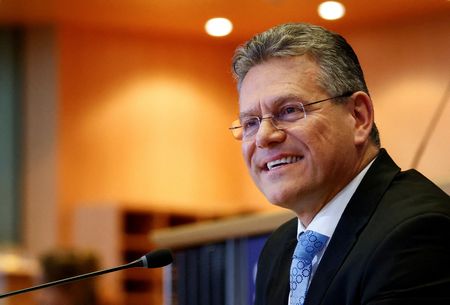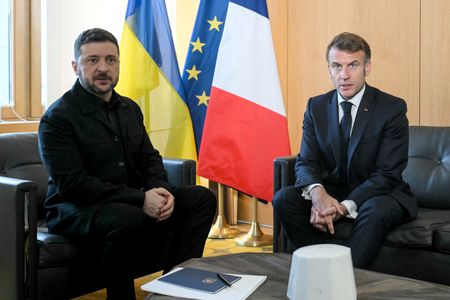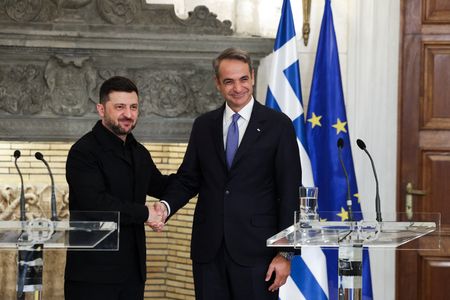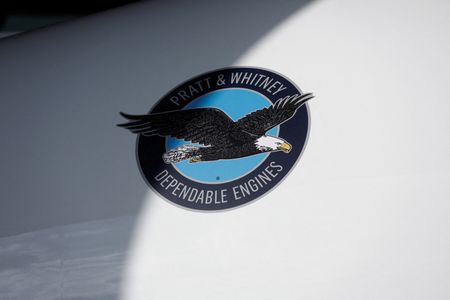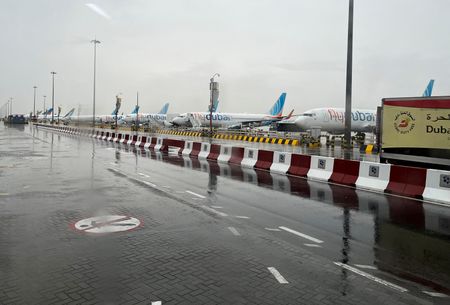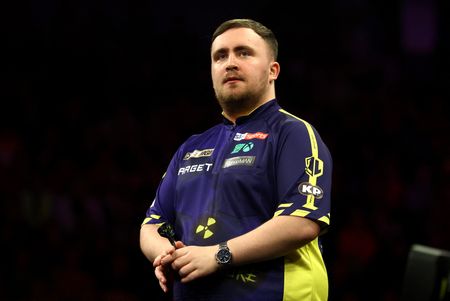By Andrea Shalal
WASHINGTON (Reuters) -European Union trade chief Maros Sefcovic said on Thursday that his top priority in trade talks with President Donald Trump’s administration is to avoid a period of economic pain for both sides from unilateral U.S. tariffs and EU countermeasures.
Sefcovic, speaking to reporters after a four-hour meeting in Washington on Wednesday with Trump’s top trade officials, said Europe was interested in buying more U.S. liquefied natural gas (LNG) and he saw some willingness on the part of the U.S. to mutually reduce tariffs.
“Our number one priority is (to) avoid this period of pain, you know? Because usually what happens, we have measures, we have counter measures and then usually, very often, the same people have to sit at the same table and resolve the problem,” Sefcovic said.
Sefcovic said he discussed his goals with newly confirmed U.S. Commerce Secretary Howard Lutnick, top White House economic adviser Kevin Hassett and U.S. Trade Representative nominee Jamieson Greer as the EU works to avert tariffs promised by Trump.
The 27-member EU could be hit especially hard by Trump’s reciprocal tariff plan announced last week to raise U.S. import tariff rates to match those charged by other countries.
The EU has a 10% tariff on passenger cars, four times the rate of the U.S. passenger car tariff of 2.5% and U.S. officials have complained about European value added taxes of at least 17.5%.
Sefcovic, citing the potential global spillover effects of tensions between the U.S. and the EU, said it was incumbent on the two sides to reach a positive solution.
He said while U.S. officials focused on the goods trade, where the U.S. has a deficit, U.S. firms had a “quite significant surplus” in the services sector, driven largely by U.S. technology companies.
Balancing the two left a deficit of about 50 billion euros ($52.35 billion), which amounted to only 3% of the overall trade level, he said.
“So, it’s not something which we cannot overcome,” he added.
Sefcovic said the EU remained interested in increasing its purchases of U.S. LNG given that Europe was phasing out use of Russian supplies, but gave no details.
“I think if we have to resolve 50 billion (euros), we can really do it … and relatively quickly,” he said. “We just need to continue to talk, to use the momentum which I hope we generated yesterday, and to focus on the positive agenda, and not on measures and countermeasures.”
Sefcovic said he told the U.S. officials that overall U.S. tariffs on the EU amounted to around 1.4%, while overall EU tariffs on U.S. goods were lower at 0.9%, and that 70% of the goods arriving in Europe were tariff-free.
“They’re very open to discuss everything which concerns lowering the tariffs,” he said, adding that a big priority was the automotive sector and how to lower and eventually eliminate tariffs, as well as mutual recognition of standards.
The EU remains irritated by a much higher 25% U.S. tariff on pickup trucks. The duty, which stems from a 1960s U.S.-European trade dispute, keeps non-North American imports out of one of the most lucrative segments of the U.S. vehicle market.
($1 = 0.9552 euros)
(Reporting by Andrea Shalal, writing by David Lawder; Editing by Chizu Nomiyama and Barbara Lewis)

